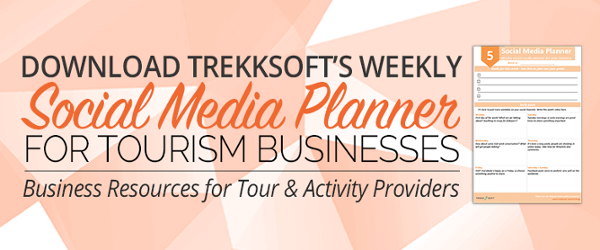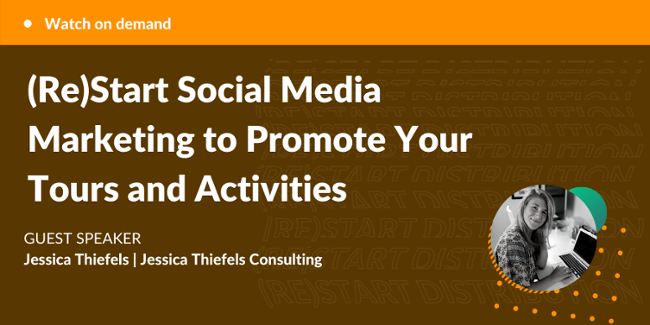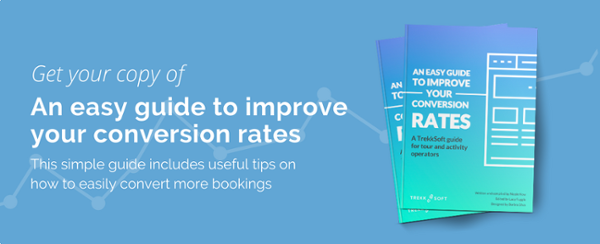This article has been updated in October 2023 to include more current data and information.
We live in a world where everyone is online. While we're aware of this, we're equally aware that not every activity or tour operator in the world is online. This means a website is one of the most effective ways of reaching your customers.
But having a website is only a small part of marketing yourself online. There are many other things to consider, such as social media or search engine rankings. Here are nine challenges you'll likely face if you engage in online marketing.
How to deal with digital marketing challenges in the tourism industry
The importance of marketing in the tourism industry cannot be overstated. Marketing helps to attract visitors to your destination, generate revenue, and increase brand awareness and bookings. Implementing strategies and researching before taking the next steps can help you overcome digital marketing challenges and create a successful marketing campaign in the tourism industry.
Before you start planning your marketing strategies, it is essential to set your marketing goals. Your marketing goals can embrace ideas such as, increasing brand awareness, acquiring new customers, and increasing bookings, between others. Going through all the work without knowing the specific and measurable objectives, it'll be hard to know if all your efforts are working or not.
1. Prioritizing mobile content
Google first spoke about mobile-first indexing back in 2016, so their announcement in March 2020 to move entirely to mobile-first indexing by March 2021 was a long time coming.
This is because mobile is now the primary way users search for information on Google, so it only makes sense to prioritize mobile searches over desktop searches. One of the biggest changes is that Google will only index content found on your mobile site, ignoring content on your desktop site.
If you have a mobile responsive website, that's great, you're already ahead of the game! The next thing to check is that important content remains on your mobile site such as tour information, images and videos. Of course you can tweak mobile design for a better experience, but the important content should remain on your mobile site.
Other things to look out for include page speed (the quicker the better) and optimized mobile page titles and meta descriptions.
You can do a quick mobile-friendly test here or check out Google's comprehensive list of recommendations on how to optimize your site for mobile-first indexing.
2. Making your website dynamic
Once upon a time, you could get to the top of search engines by filling your website with keywords in different places throughout a single webpage. Times have changed now: you need to have more quality content to offer your visitors.
One good way to deliver this content is by making your website dynamic, aka frequently publishing new content for your viewers. Take, for example, a news site - it always has new content when you visit the website. The same goes for Netflix, they're always offering you new trailers to watch.
Operators can benefit greatly from starting a blog and regularly posting about tours they've run, new updates in the local community or niche.
Read more: The basics to building a great tour operator and activity provider website

3. Consistently creating great content
A dynamic website and a mobile-indexable site only works in your favor when you have great content. So apart from the technicality of SEO, you also need to consider publishing great content regularly. Your goal should be to create content that:
- Elevates your brand as an expert of a destination or activity
- Provides readers more information about your company and how you run your experiences
- Provides readers valuable information about your destination and draws them to book an experience with you
I personally love it when tour operators blog about different things happening in their destination, such as a notable event (maybe something that only happens once every 10 years) or a quirky way they celebrate a Christmas. Another thing you could blog about are the hidden gems in your area, and maybe even include an interview with owners of a restaurant or museum.
If you're suffering from writer's block and need some inspiration, go back to your customer personas or check out our marketing guide for each stage of the customer journey.
4. Allow customers to book in real-time
If you've got a website that's both dynamic and responsive, then there's another thing you need to think about as a tour operator: you need to make sure your tours and activities are bookable on it.
This means you need a booking system. Again, this is something that TrekkSoft can help you with.
5. Finding the time to be active on social media
With a number of different social media channels available, finding the time to be active on them all can be very challenging. I advise picking two channels and prioritizing engagement (responding to comments, engaging followers, etc.) on those channels.
For other channels you might be on, take a slightly more passive role and simply maintain a regular posting schedule.
Speaking of a posting schedule, do you help maintain a regular posting schedule? Download our social media calendar for tour operators to get you back on track.
6. Engaging followers on social media
Social media is a great way to increase your visibility online, engage with potential clients and ultimately turn them into customers. But how?
In our webinar with social media expert Jessica Thiefels, an important part of being on social media is understanding your brand's place within the wider conversation. Yes, now we're all talking about COVID-19 and its impacts on society. But when things calm down and we (eventually) move on from the pandemic, this practice holds true.
Jessica recommends practicing social listening - the simple act of getting on social platforms, searching for relevant hashtags of brands you like and taking note of what people are asking for or talking about, and how brands are responding.
With a better understanding of what's going on online, you're better equipped to plan out your social content and how you would like to engage your audience. Here are some ideas from her webinar:
-
Run Twitter chats or go-live on Instagram or Facebook
-
Set aside 15 to 20 minutes a day for each platform to comment, like and share content
-
Build engagement into your captions such as "Comment below with your favourite travel destination".
-
Host a hashtag campaign
Watch the full webinar with Jessica here
7. Kickstarting email marketing
Email marketing might be seen as a thing of the past, but I can assure you it isn't. And you don't need to beat an algorithm in order to be successful. For instance, you can engage in A/B testing to try out different ideas.
If you have a big mailing list it could work as an incentive for other companies to partner with you.
Read more: Top 3 email marketing tips to grow your tour or activity business
8. Growing your email marketing lists
Email marketing isn't possible if you don't have a list of email addresses. To gather them, you're going to have to engage in proven tactics to get them. Here's some way to increase your email lists:
- Add a pop-up form on your website. A simple "get in touch with us" where the client can share contact information or subscribe to your newsletter can be a great tool for audience growth. Remember to only ask for necessary information, such as name and email.
- Work with social media. Adding a signup button on your social channels and promoting your website can help you increase your email list.
- Creating a simple lead magnet incentivizes people to give you their email addresses.
- A lead magnet doesn't have to be an elaborate ebook or report. It could be as simple as a 3-page destination guide or a destination guide with an exclusive discount code.
9. Increasing ancillary sales
It's one thing to generate revenue by selling your own product… it's another thing to generate revenue by selling somebody else's products on top of that. This is known as ancillary revenue. You can offer customers upgrades on your current services, such as extra time on an activity. Still, you can partner with other companies to sell additional services related to their travel, such as travel insurance, travel gear, car rental, souvenirs, and more.
Read more about how to increase revenue from your bookings on How to upsell and cross-sell in the tourism industry.
10. Building a customer-centric market
Building a strategy that puts customers in the center can be challenging since there's a need for constant research and adaptation since the customer's needs can change over time. According to a study by Salesforce, 66% expect companies to understand their unique needs and expectations. So not only a customer-centric strategy can increase loyalty, but it also increases bookings.
For more ideas on how to turn lookers into bookers, download our free guide.






